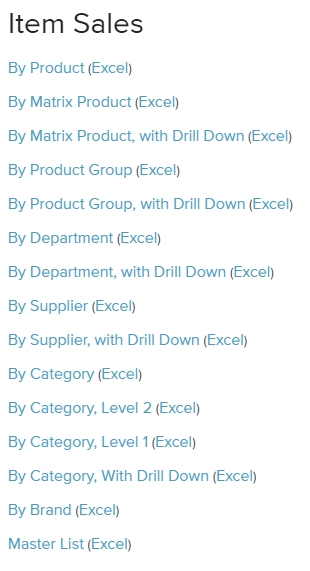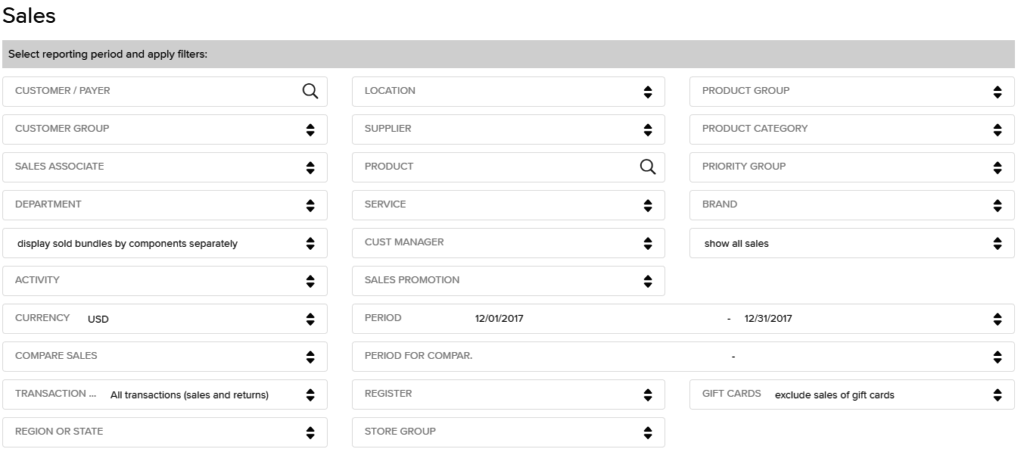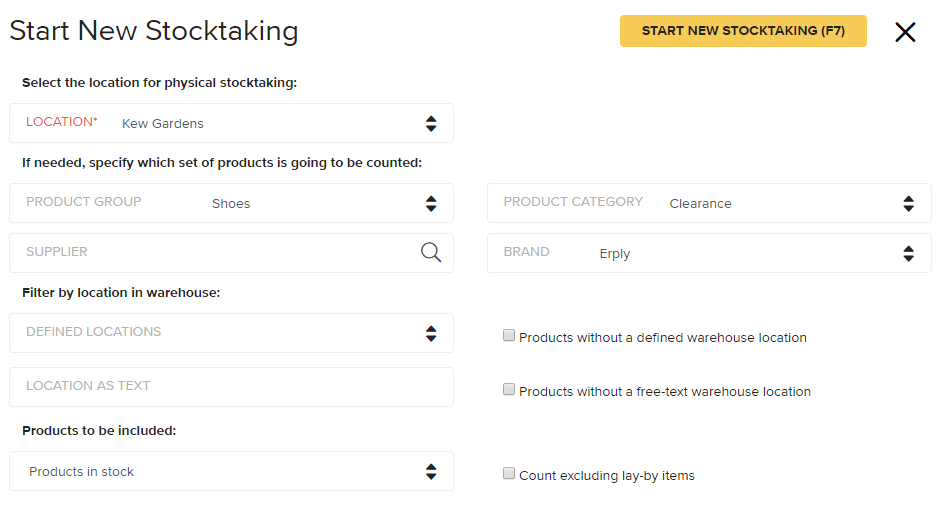What Are the Cycle Counts?
Cycle counts are inventory counts that don’t shut down your workforce to count everything all at once. Instead, certain products or groups of products are counted at certain times, while others are counted at other times. You maintain cycles for every group so that no groups are ever being held up for inventory counts at the same time. There are a lot of good reasons to do this.The Benefits of Cycle Counts
You can count certain products or product groups more frequently than others. This means that you can keep a closer eye on bestsellers that tend to move quickly, and waste less time on items that tend to move very slowly.You don’t have to shut down all your operations to do a cycle count.
You can ensure that your inventory management system shows extremely accurate information at all times for your whole staff.
You can stay on top of the organization before it gets out of control.
You can avoid over-ordering. If you have been ordering certain products on auto-pilot every time inventory counts roll around, you’ve probably noticed a surplus of certain things. With cycle counts, you get a more accurate picture of how often you actually need to order every product.
You can use the data from cycle counts to get a more accurate picture of consumer behavior. The cycles give you a better idea of when, precisely, your customers are buying certain products.
Designing Your Cycle Counts System
Executing cycle counts has many benefits for all kinds of businesses, but every business will execute the cycles slightly differently. However, as you design your system of cycle counting, there are some things to keep in mind:- How you organize products in the system
- How often you intend to count
- How you will track the accuracy of the counts
- During your workday, when will counts for each specific group be performed
- How you will use the data from cycle counts to improve your inventory management
Organizing Products
By far the most important part of cycle counts with the ERPLY system is using your automatically-created product groups to filter products for counts. If you want the smoothest and most effective inventory counts possible, getting this step right from the start is your top priority.We’ve previously discussed product grouping in “Why Managing Inventory Could Be Your Biggest Problem”, but here’s a quick recap:
Run a sales report and identify which groups contain your top sellers. These are those products that fall into the old adage that 20% of your products make up 80% of your revenue. Identify your top 20% of products. This product group should be counted more frequently, and with greater care to collect consumer data, than any other.
Another option is to track sales by supplier, brand, or department, and use these options to determine where you see the most frequent product sales. This will help you identify where your priorities are for more frequent cycle counts.


Erply includes a wide variety of sales reports and filters to help you prioritize inventory for counts.
Before we move on to discussing the frequency of counts, let’s talk about three types of product grouping that are frequently referred to in cycle counts.
Types of Cycle Count Systems
There are three main types of cycle count systems that most businesses fall back on. These include:ABC System: The ABC system relies on separating products into three main groups. Start with the A group, which is the group of products that earn the most revenue. This should be the top 80% of your sales, as we discussed above. Then, you’ll group all the products that make up your next 15% of total sales and put those in the B group. The C group is made up of products that make up your final 5% of sales. These will be counted the least frequently but will make up more than half of your products if you are following the standard 80/20 rule.
Control Group System: A control group system has businesses count a small group of products many times in a small period of time. This allows them to uncover any errors, and correct them. Then the process is repeated on another group, and so on.
Random Sample System: In the random sample system of cycle counts, products are grouped together randomly to be counted. This is often the best way to handle a warehouse that houses a huge quantity of very similar products that could all be grouped into the same broad category, for example.
Frequency of Counts
Now that you have your products grouped together, the next thing you need to consider is how often you’ll count. This will again depend on your business and its unique needs, but a good rule of thumb is that cycle counting should happen frequently enough to be part of your normal facility operations. The more often you count, the more accurate your counts will be, and the lower the risk will be of inventory over- or under-stocking.Most businesses do cycle counts at least once per quarter, but that is a minimum for large companies with hundreds or thousands of products. If you have products that routinely sell out faster than you can order them, you may need to do weekly or even daily cycle counts of that product group. On the other hand, some groups may only need to be counted once or twice a year, if they are very slow-moving.
Factors to consider in the frequency of your counts include:
- How the frequency will impact customer service or daily operations
- Supplier lead and shipping times
- The schedule of any third-party audits
- The pilferage risk (If a product is considered to be at higher risk for pilferage, it should be counted more frequently, but on a random schedule.)
- How important it is to have exact accuracy on that product group at any given moment
- What you want to do with the data collected (For example: If you are interested in learning more about how seasonal sales impact a specific product group, you’ll want to do counts before and after each seasonal sale.)
- When you will be re-ordering product from specific suppliers
Tracking Cycle Counts Accuracy
The next part of designing a working cycle counts system is to decide how you will maintain accuracy within your system. Accuracy is not only in the number of the product you have, but also in the location of the product, and the group that the product belongs to. One way that most businesses ensure accuracy is to do a blind count. This means that separate employees or systems will count the inventory, and the numbers will be compared before data is recorded.However, other tips for ensuring accuracy include:
Be sure the item that is being inventoried is currently frozen in the system so that you aren’t fighting real-time sales to get an accurate number. One way that some stores handle this is to have a certain number of a specific product on the shelves that are not counted in the inventory until the very last moment.
Track the accuracy of your inventory management system over time so that you can set goals for your cycle counts in the future. Accuracy targets give employees something to work towards.
Any errors in the count should be investigated so that the exact cause of the error can be avoided for the next cycle.
Any defective or obsolete stock should be removed before the count, to reduce how much math is needed to determine the true inventory level.
Once again, ERPLY’s system of automatically grouping products can vastly help with the accuracy of cycle counts. When you approach cycle counts with a very organized system that has already grouped your products for you, it is much easier to identify exactly where and what to count, eliminating any potential errors from the get-go.

When you’re ready to take on a cycle count in Erply, you can filter by a number of options to make the task manageable and assign the right size task to your employees. If it’s tough to set aside time, then apply more filters for a smaller chunk of inventory.
Timing Your Cycle Counts
It can be very difficult to determine when in your business cycle you should be doing inventory counts. The entire point behind cycle counts was to eliminate having to shut down entirely to do wall-to-wall inventory from time to time. However, it is crucial that you aren’t interrupting business to do inventory on a group of products, for two reasons: First, it hurts customer service. Second, it leads to inaccurate counts as the product continues to move while you are counting.Therefore, you need to consider things such as when the product is coming in, and when the low points in product sales occur. However, in most cases, you’ll still have to put a freeze on the product to get an accurate count. This is where cycle counts can help you soothe customer relations; the rest of your products are still being moved, and if you time your counts correctly, you can avoid high points in a specific group’s sales trends. If you cannot freeze activity on inventory while you count, then minimize as much as you can, and be sure that all movement is extremely well-documented so that it can be accounted for in inventory.
Many businesses solve this by having inventory counts done during the much slower third shift of business, or in the early hours of the business day before most of their customers arrive.
Improving Inventory Management with Cycle Counts
Finally, a good cycle count system helps you learn how to better manage your inventory. By having more data about how your inventory is moving on a micro level, you’ll be able to order, move, and market your products more intelligently.For example: Say that your usual inventory schedule was once a quarter. But you’ve now switched to weekly cycle counts, and you find that a product group is moving extremely quickly during certain days, but for some reason doesn’t sell as much on Thursdays. You may wish to consider offering coupons specifically on Thursdays to bump sales. This is just one very simple example of how in-depth information about your inventory movements could be beneficial to other areas of your business. You can also impact your budget by lowering unnecessary ordering, reducing pilferage, and avoiding canceled orders due to the back ordered product.
The Takeaway
Overall, cycle counts are a great way to help maintain better, more accurate inventory data. But it all comes back to how well your inventory is organized. Without those groupings, you’ll find that cycle counting is nearly impossible. This is where ERPLY can be extremely helpful. By having a built-in grouping process for every piece of inventory that arrives in your business, ERPLY makes your cycle counts system automatic. Whether you choose our simplified two-group process, the ABC process, or some other product group system, you’ll find that your counts will be faster, more efficient, and much easier.To learn more, contact ERPLY or try out our inventory system today.
Sources provided by a client.